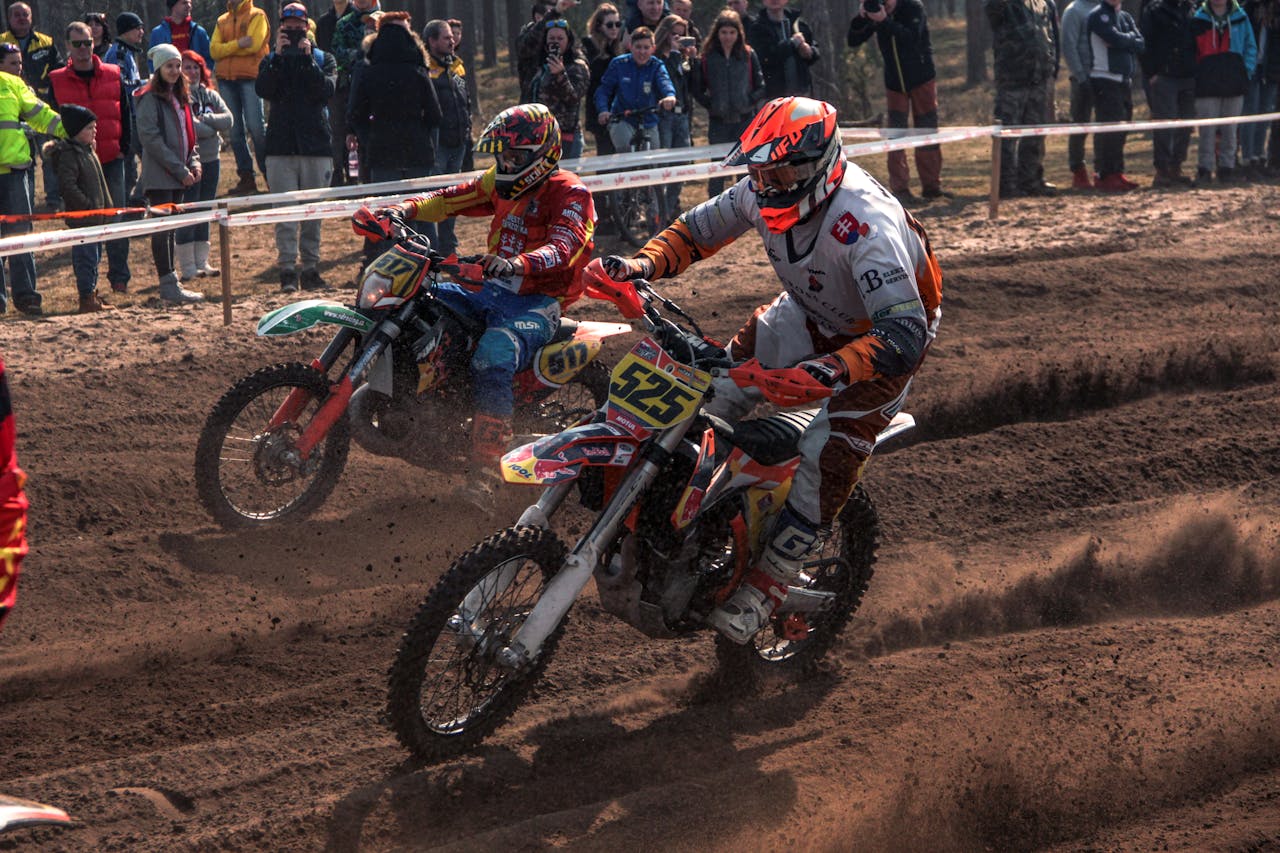Riding through the icy roads of the UK in winter can be a daunting task, especially for motorcycle enthusiasts. The unpredictability of the road conditions coupled with the unforgiving nature of ice spells peril for even seasoned riders. Therefore, it’s crucial to have an understanding of the bike’s traction control system and its potential benefits for such situations. The traction control system is a modern-day marvel that helps riders maintain control over their bikes even in the harshest weather conditions. Using keywords such as riding, bike, motorcycle, traction, control and winter, this article will guide you on how to effectively use this system to enhance your winter rides.
Understanding the Traction Control System
Before we delve into the details of effectively using the traction control system, it’s important to grasp what it is and how it functions. Traction control systems are designed to prevent wheel spin during acceleration by automatically reducing the bike’s power. This means that when the system detects that the tyres are losing grip, it reduces the torque to the wheel. This is done either by adjusting the fuel supply, retarding the ignition, or by acting on the throttle body. Hence, the rider doesn’t lose control.
Dans le meme genre : What are the best audio communication systems for sport bike group rides in the UK?
Understanding this technology is crucial for every rider as it can make the difference between a smooth ride and a dangerous skid. Traction control systems are particularly useful in icy conditions, where maintaining grip on the road can be difficult. A good understanding will give you the confidence to navigate your motorcycle safely, regardless of the road conditions.
The Importance of Proper Tyres
Tyres play a huge role in maintaining the stability and control of your motorcycle. Even the best traction control system will struggle if the tyres are not up to par. When riding in icy conditions, it’s essential to choose winter tyres. These tyres have a high silica content, which provides better grip on icy roads. They also feature deep grooves and unique tread patterns that are designed to disperse water and slush effectively, reducing the risk of hydroplaning.
En parallèle : How to select and fit sport bike body armor for maximum protection in UK traffic?
Changing tyres for the winter season may seem like an unnecessary expense, but it’s a small price to pay for your safety. After all, maintaining good grip on the icy road is paramount for preventing accidents and controlling your bike effectively. It’s equally essential to ensure that your tyres are correctly inflated. Incorrect tyre pressures can significantly affect your bike’s handling and stability.
The Role of ABS in Traction Control
ABS or Anti-lock Braking System is often a companion to the traction control system, and these two work together to ensure a safer ride. They both aim to prevent wheel lock-up and maintain control. ABS comes into play when you’re forced to brake hard, particularly in slippery conditions. Without it, the wheels can lock up, causing skidding and loss of control.
However, ABS doesn’t substitute for safe, controlled riding. It’s a layer of protection that operates in the background, ready to intervene when necessary. When you’re riding in the icy conditions of the UK winter, it’s essential to be cautious, slow down, and allow a larger stopping distance. ABS is there to help if things get out of control, but the onus is on you to ride responsibly.
Appropriate Riding Gear for Icy Conditions
While the bike’s traction control system, ABS, and the right tyres can enhance your safety on the icy roads, another critical factor is your riding gear. The cold weather can slow your reactions, affect your comfort and concentration, and increase the risk of hypothermia.
Wearing the right gear – designed for riding in cold, wet, and icy conditions – can make a significant difference. This includes a good quality winter riding jacket and trousers, typically waterproof and insulated, along with winter motorcycle gloves and boots. It would be best to also consider a balaclava under the helmet for additional warmth.
This gear not only keeps you warm and dry, but it also provides a layer of protection in case of a fall. Reflective strips or patches on your gear can also enhance visibility, particularly in poor light conditions common during winter.
Adapting Your Riding Style
Last but not least, adapting your riding style for icy conditions is necessary in conjunction with the traction control system. Aggressive acceleration, braking or cornering is a recipe for disaster on icy roads. Instead, smooth, gradual movements are the order of the day. Try to keep the bike as upright as possible, especially in corners, and avoid sudden changes of direction or speed.
Remember to use both the front and rear brakes and squeeze the lever gently and progressively. In icy conditions, it’s better to err on the side of caution and ride slower than you usually would. It’s also essential to keep a safe distance from vehicles in front, as stopping distances are significantly longer on icy roads.
By taking these precautions and effectively using your bike’s traction control systems, you can ensure a safer ride, even in the unforgiving winter conditions of the UK.
The Benefits of Advanced Rider Aids on Sport Bikes
The technological advancements in recent years have seen the advent of rider aids that have revolutionized the way motorcyclists interact with their bikes. These systems, like the traction control and stability control, have been designed to enhance both the performance and safety of the motorcycle.
Traction control, as we’ve explored earlier, helps maintain grip by preventing wheel spin. Stability control, on the other hand, assists the rider in maintaining the balance of the motorcycle, particularly during cornering. It analyzes the lean angle of the bike and adjusts the power or brake pressure accordingly to prevent tipping or skidding.
Another critical rider aid that’s worth mentioning is the cornering ABS. Unlike traditional ABS, which works best in straight line braking, cornering ABS takes into account the bike’s lean angle and adjusts the brake pressure on each wheel accordingly. This reduces the risk of skidding while cornering, hence enhancing safety.
These rider aids are particularly beneficial when riding in icy conditions. They provide the much-needed assistance to maneuver safely on slippery surfaces, enabling you to continue enjoying your ride even in less-than-ideal weather conditions.
However, these systems are not meant to replace safe riding practices. They are there to assist and support, but the ultimate responsibility for safety lies with the rider.
The Role of Proper Riding Gear in Winter Riding
Wearing the appropriate riding gear plays a crucial role in your safety and comfort during winter rides. The right gear is designed to protect you from the elements and potential injuries, while also keeping you warm and comfortable.
A full-face helmet is a must, as it offers the most protection. It shields your face from the wind and cold, and the built-in visor offers protection from snow and sleet. High-quality winter riding jackets and trousers are typically waterproof and have thermal lining for warmth. They also often feature protective padding in critical areas like the back, shoulders, and knees.
Winter motorcycle gloves are designed to keep your hands warm without sacrificing dexterity. They provide good grip and allow you to effectively control your bike. Similarly, winter riding boots should be waterproof and insulated, with a sturdy sole for good traction.
Reflective elements on your gear are also crucial in winter conditions. Shorter days and longer nights mean less visibility. Reflective gear helps make you more visible to other road users, improving your safety.
Remember that the cold can slow your reactions and affect your concentration, so it’s essential to stay warm. Staying warm means you can focus more on the road and less on the cold.
Conclusion: Achieving Safety and Enjoyable Winter Rides
Even with the unpredictability of winter conditions and the innate challenges of riding snow covered roads in the UK, the right combination of advanced traction and stability control systems, correct tyre choice, proper riding gear, and adjusted riding style can greatly enhance your safety and enjoyment.
The modern sport bike is equipped with sophisticated control systems that are designed to help you maintain control in challenging conditions. Utilise these systems to their full potential, but remember that they are aids, not substitutes for safe riding practices.
The choice of tyres can transform the way your bike interacts with the icy road. Opt for winter or studded tyres that are designed for icy conditions and remember to maintain the correct tyre pressure for optimal performance.
Your riding gear is your first line of defense against the elements and potential injuries. So, invest in high-quality winter riding gear that can keep you warm, dry, and safe. Reflective elements on your gear can enhance your visibility, which is particularly crucial in poor light conditions.
Lastly, adapt your riding style to the conditions. Be smooth and progressive in your acceleration, braking, and cornering. Avoid sudden movements and maintain a safe distance from other vehicles.
With these measures in place, you can confidently navigate through the icy conditions, ensuring not only your safety but also enjoyment of your winter rides. After all, there’s a unique thrill in conquering the challenge of riding in the snow, and with the right preparation, you can fully embrace this thrill.











